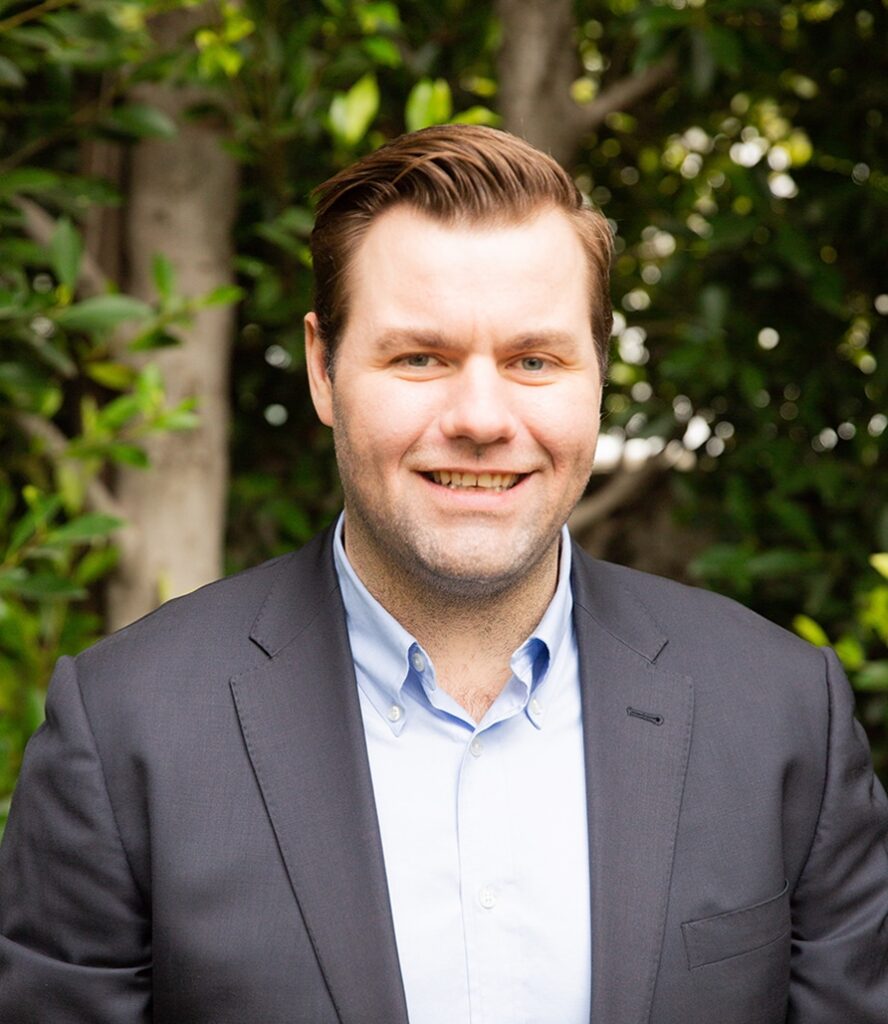Breaking Ground
George Saad, Partner and Director of Acquisitions, The BLVD Group

By Jessica Hoefer
6 min read
National Housing & Rehabilitation Association’s 2024 Summer Institute in California presented a series of one-on-one conversations with key executives from NH&RA member companies – the Developers’ Perspectives on Markets, Opportunities and Challenges.

Dan McGowan, NH&RA’s associate director, talked with George Saad, partner and director of acquisition at Los Angeles-based The BLVD Group about the company’s focus and portfolio.
Saad is responsible for sourcing, structuring and financing new acquisitions and managing disposition activity for The BLVD Group.
This interview has been edited for length.
Dan McGowan: You’re responsible for sourcing, structuring and managing all the acquisition and disposition activity for The BLVD Group. Can you tell us a little bit about The BLVD Group as a company? What got them started in the industry and what kind of deals are you focused on?
George Saad: BLVD was founded in 2010 by two principals. They started in the market-rate space and upon the exit of those first value-add deals, started looking for properties for a long-term hold. And then stumbled into affordable about ten years ago and purchased the first affordable housing deal in 2014.
BLVD has acquired about 45 affordable housing properties across the country in five years, from 2014 to 2019. We continued to build a portfolio from there and have started expanding on the Low Income Housing Tax Credit syndication front.
We’ve done nine deals in the four percent tax credit space and are looking to continue to grow that portfolio over the long term.
DM: How many units are in your portfolio?
GS: About 6,000 units today.
DM: What’s your story coming into this role? When did you join The BLVD Group and what did you do before to set you up to be successful?
GS: I joined BLVD eight years ago. I had a brief stint on the brokerage side before I realized that it wasn’t the best fit for me. And then began working for a traditional market-rate multifamily owner in Los Angeles. I did some ground-up work and managed five to six multifamily entitlement processes in LA. I learned as much as I could and decided that I wanted to put my efforts into the affordable housing industry. So, I joined BLVD and haven’t looked back.
DM: What kind of deals are you working on now?
GS: Most recently, we closed a 300-unit, four percent acquisition rehab in New Hampshire that was a $50 million acquisition, about a $25 million construction budget that closed at the end of May. That was a great deal.
We had a state agency risk-share permanent loan there, a seller carryback loan, a construction equity bridge loan, as well as soft money from the state of New Hampshire, and a Department of Housing and Urban Development Green and Resilient Retrofit Program (GRRP) award that was layered in to build a $2.5 million renewable energy system.
It was great to be able to layer in the HUD award to help us and then the renewable energy tax credits on that deal as well.
DM: Do you see yourself layering in those energy pieces on deals going forward?
GS: Yes. Renewable energy tax credits are a net positive on our deals, even without a grant or a local subsidy award. There are a lot of opportunities for reducing electricity costs long term, but also being able to provide some stability and reduce the risk in the ongoing utility costs over the 15-year compliance period is beneficial.
DM: I understand you’ve done nine deals in seven states, California, Nevada, Arizona, Texas, Virginia, Rhode Island and New Hampshire. What attributes in these markets are attracting you to do business there?
GS: We started close to home. Our first deals were in the Los Angeles area. On the syndication side, being able to closely check on the deals during construction was a huge benefit.
We expanded from there and then started pursuing some local soft money opportunities in Texas and Virginia. In the last few years, bond availability has been a big concern in California and Texas, in particular. BLVD has expanded to some areas where there’s a little bit less competition and some great state agencies who are responsive and good to work with.
DM: How are you making four percent preservation deals in your pipeline work, despite the current debt market?
GS: On the permanent debt side, I think, the first goal is to try and maximize the amount of permanent debt proceeds that are available for each one of these deals.
It starts with working closely with the sellers of these deals if there are existing vacancies or bad debt issues that are present to improve the underwriting parameters. Beyond that, I think it’s maintaining flexibility.
DM: BLVD is not really in the new construction space, but what changes are you seeing in the middle-income space for the deals you’re working on?
GS: We have a portfolio on the affordable side. We also have a middle-income portfolio, and some market-rate deals as well. On the middle-income side, there’s been a lot of changes over the last year. I think the bond markets are less favorable than they were a year and a half ago, and certainly even a year ago. Looking at creative opportunities, there have been some changes on the legislative side.
Those middle-income deals were not, like you mentioned, new construction developments, so looking at converting existing market-rate deals in most instances to middle-income. If you’re competing with other value-added market-rate buyers in the space, you have to be able to provide some sort of value that’s there to get those deals done. I think that it differs based on the market that you’re in, but we’re seeing some changes with the property tax exemptions or abatements that are out there.
DM: Is there anything unique about the property, market or seller that allows them to successfully convert?
GS: Yes. With the changing debt markets right now, the common denominator across all the successful deals we’ve done is a public-private partnership. Some municipalities and states offer potentially better financing through municipal or tax-exempt bonds. There’s some opportunity on the property tax side as well.
DM: For your straight acquisition preservation deals, how have you been able to create value on those?
GS: There is still this misconception in the equity and the private capital space that affordable housing is at an expense to an investor’s return. I think there’s a big element of communication and education that goes into working on our straight preservation deals, allowing people to understand that affordable housing offers a better risk-adjusted return than what they would otherwise be looking at in the market rate space.
To listen to the full interview and Q&A visit NH&RA’s On-Demand Learning Center.